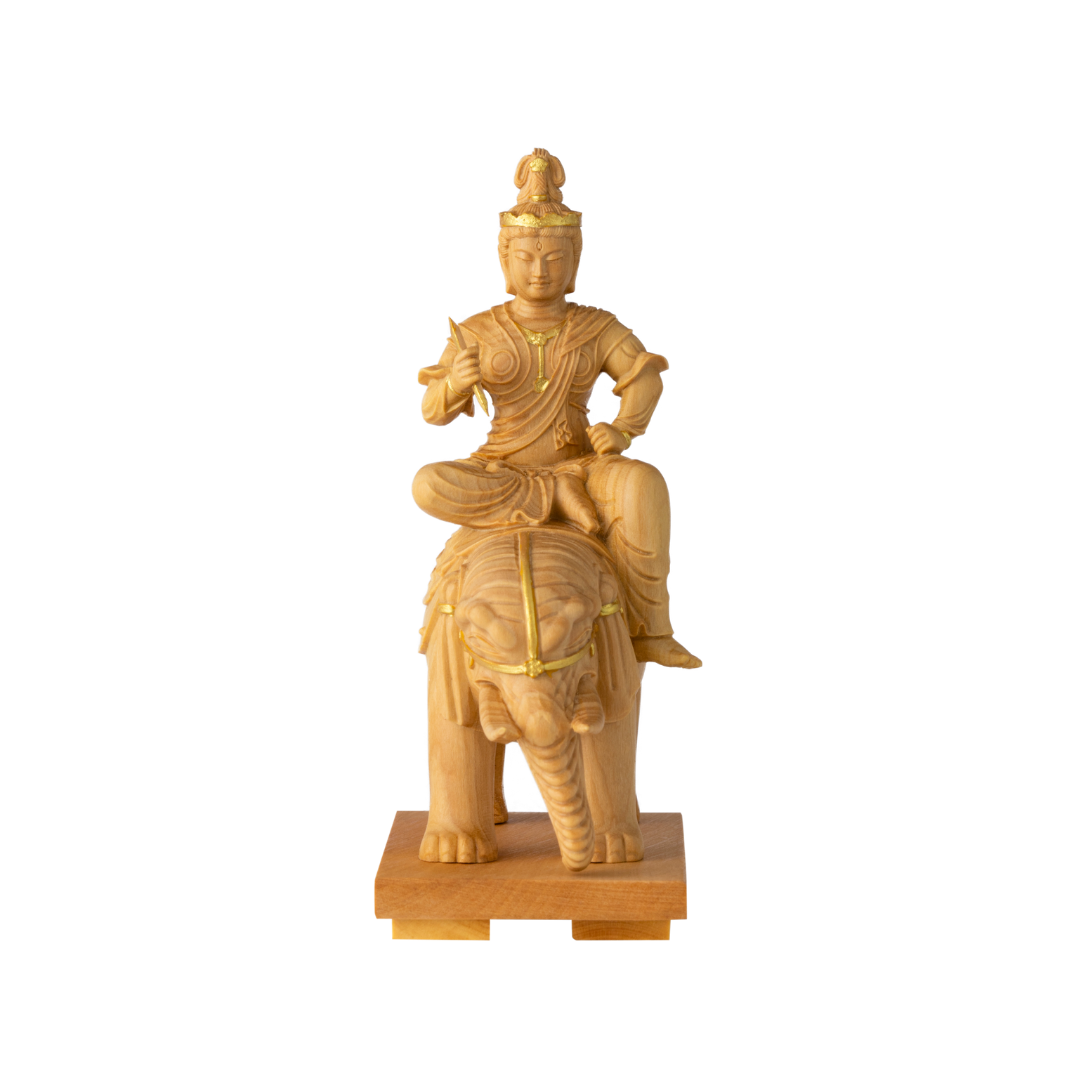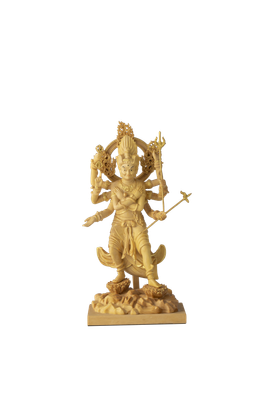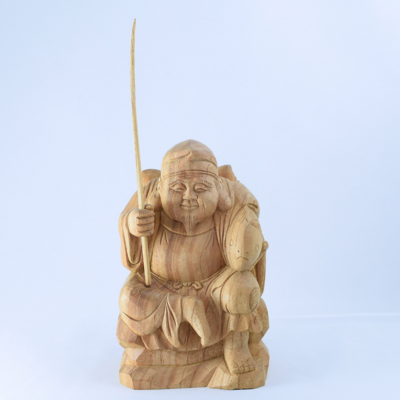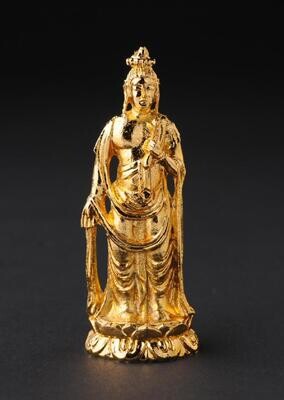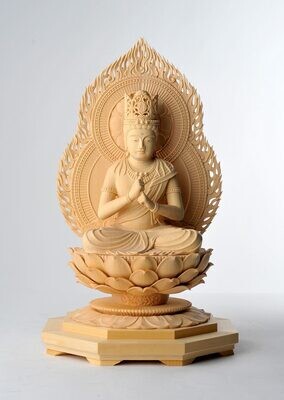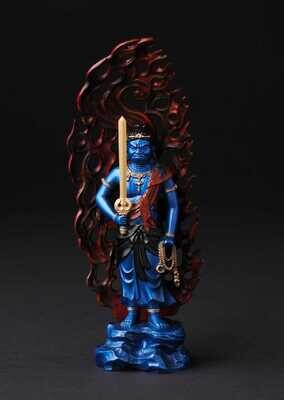Taishakuten (Sakra) (帝釈天)
In ancient India, this god of lightning was called Indra, a war god. He fought against a ferocious demon using a vajra as a weapon. He is also said to be the god who governs the gods of heaven, and is the companion who partnered with Brahma to help Buddha attain enlightenment. He had a dynamic personality and he started a fight with Asura by kidnapping his daughter and making her his wife. His facial features are said to be the most beautiful in the world of Buddha statues.
known as Indra in Hindu mythology, is depicted as a god who rules the sky and governs thunder, rain, and lightning. He is also considered a god of warfare, symbolizing bravery and heroic deeds. He is often portrayed riding a white elephant, a symbol of his power and majesty.
In Hindu mythology, Indra is one of the Trimurti, along with other major gods like Brahma (the creator), Vishnu (the preserver), and Shiva (the destroyer). He is regarded as the ruler of the heavens and the atmosphere, riding his thunderbird Vahana across the sky, fulfilling the role of defeating evil forces and maintaining cosmic order.
In the context of Buddhism, especially within various Buddhist sects, Indra is worshipped as Taishakuten. His role in Buddhism can vary among different Buddhist traditions. Generally, Taishakuten is seen as the protector deity of Buddhism. He is believed to safeguard significant events in the life of Gautama Buddha, such as his birth, enlightenment, and final nirvana. Taishakuten is considered a guardian of Buddhist teachings and doctrines rather than a god of warfare.
Worship of Taishakuten is practiced by both Hindu and Buddhist followers, especially during festivals when prayers and rituals are dedicated to him. These ceremonies often involve expressing gratitude for natural phenomena like thunder, rain, and their importance in agriculture.
In summary, Taishakuten or Indra is a deity with a prominent role in both Hindu and Buddhist religious traditions. He is associated with the sky, thunder, and heroic qualities. While his role may differ between these traditions, he is universally regarded as a significant and respected figure, and his worship is deeply ingrained in the religious and cultural practices of India and various Asian regions.
- Size: H10×W4×D7 (cm), 55g
- Material: Tsuge (柘植)
- Made in China
- You can choose the option to consecrate this statue (give an eye-opening ceremony) before it is shipped from Japan. If you choose this option, we will bring the statue to a Japanese temple, and pay them the necessary fees so that your statue is properly consecrated. The temple will issue a certificate of proof with your name on it, which will also be shipped together with your statue
- Shipped globally from Japan by using DHL. DHL is the world-class shipping services provider who makes international delivery a fast, smooth, and hassle-free experience. Delivery time can be faster than when shopping at an e-commerce website in your country, and of course your package will be covered by insurance. You can check the shipping cost for your entire order before you make a purchase
